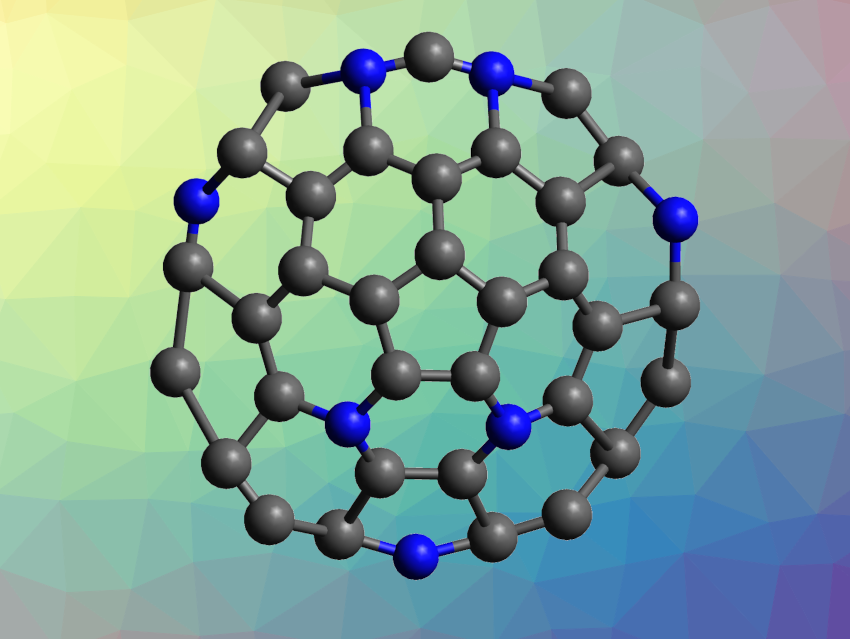Hydrogen peroxide (H2O2) is an important oxidant with uses in different industrial sectors. Currently used methods for the large-scale production of H2O2 can suffer from drawbacks such as high energy use and safety concerns. An electrochemical two-electron oxygen reduction reaction (2e– ORR) could be a useful, green alternative for the production of H2O2 from oxygen and water. However, this requires suitable electrocatalysts that promote the reaction in an efficient and selective manner. Metal-free carbon-based materials can be useful candidates for this, but they usually work best in alkaline media, where H2O2 can be unstable.
Wangqiang Shen, Kun Guo, Jian Zhang, Xing Lu, Huazhong University of Science and Technology, Wuhan, China, and colleagues have developed a nitrogen-doped carbon nanomaterial that is rich in pentagonal defects (PD/N–C) and can be used for H2O2 electrosynthesis under acidic conditions. The team started from the fullerene C60, which was subjected to pyrolysis at 1000 °C for 2 h under an argon atmosphere to give pentagonal-defect-enriched carbons. This was followed by treatment with ammonia to obtain the desired pentagonal-defect-enriched nitrogen-doped carbons.
According to the researchers, the combined effects of the pentagonal substructures and the nitrogen doping improve *OOH adsorption and, thus, promote H2O2 production. The PD/N–C catalyst showed high ORR activity and selectivity for the two-electron oxygen reduction reaction, as well as stability in acidic electrolytes. Used in a flow cell, PD/N–C provides a high Faraday efficiency and a high H2O2 yield rate. Overall, the work could be useful for the design and synthesis of efficient, acid-resistant carbon electrocatalysts for the production of H2O2.
- A Pentagonal Defect-Rich Metal-Free Carbon Electrocatalyst for Boosting Acidic O2 Reduction to H2O2 Production,
Chang Zhang, Wangqiang Shen, Kun Guo, Mo Xiong, Jian Zhang, Xing Lu,
J. Am. Chem. Soc. 2023.
https://doi.org/10.1021/jacs.3c00689




